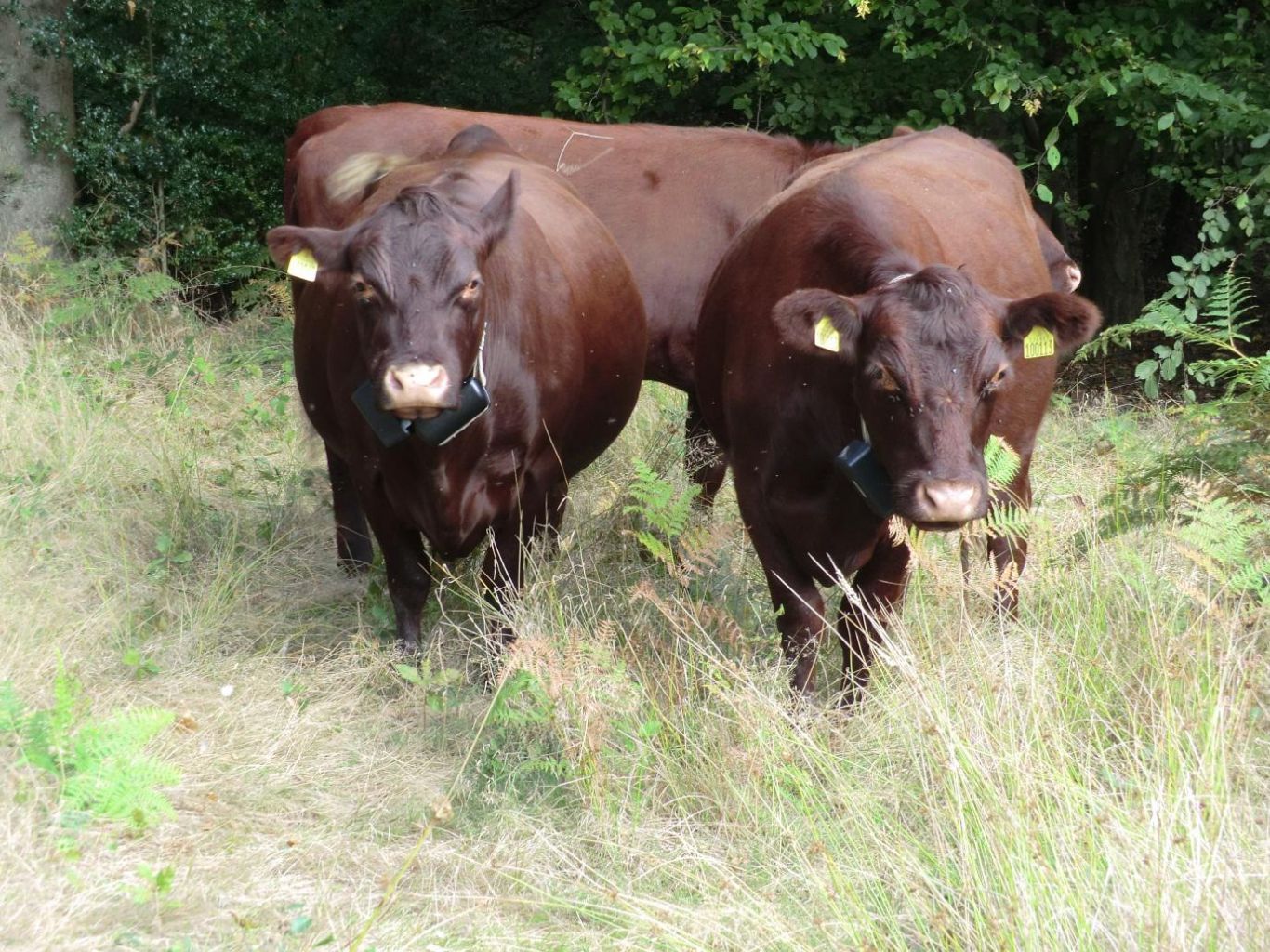23 September 2014

Red Polls grazing at Epping. Note the collars housing sensors for the 'invisible fence' and GPS units.
23 September 2014 UK Wood Pasture and the use of invisible fencing
The first stakeholder meeting for the UK Wood Pasture and Parkland Stakeholder Group took place at Epping Forest on the edge of Greater London. The meeting was organized by Dr Matt Upson (Cranfield University) and hosted by Dr Jeremy Dagley (Head of Conservation, Epping Forest).
Epping Forest is managed by the City of London Corporation and includes an extensive forest area including about 800 ha of agricultural land; it receives about 4.5 million visits per year. Grazing on the site was reintroduced in 2002, and a contract grazier is paid to graze beef cattle (Red Polls and Longhorn) on the wood pasture and parkland during the summer. They are housed indoors during the winter.
The attendees of this initial meeting indicated that “biodiversity and wildlife habitat” was the principal positive aspect of the agroforestry system. Key negative issues were seen as the complexity of work and management costs.
Because Epping Forest includes widespread public access for recreation, traditional electric fencing is inappropriate. Instead an interesting innovation being used is ‘invisible fencing’: a new barrier-less fencing system (Dagley et al, 2014). Instead of placing an electric wire above the ground, an insulated electric wire (maximum length of 2000-3500 m) is placed about 150 mm deep. This is considered to be the optimum depth for strength of signal and for avoiding problems with people and small mammals. The cattle are then fitted with collars housing an electric sensor. It follows the same concept as dog fences developed and used in the USA and Europe. This sensor issues an audible warning, and failing that, a mild electric shock if the animal approaches the wire. The following YouTube video demonstrates the use of the invisible fencing.
https://www.youtube.com/watch?v=HuI-1N-wwtI
In this way, the wire can be used to demarcate areas for grazing or exclusion. A small LED on the sensor allows the stockperson to determine if the batteries powering the sensor are working. At Epping Forest each animal is also fitted with a GPS unit, which sends an hourly signal with the animal’s location so the stockperson can identify the location of each animal. The existing research shows that the cattle soon recognize the position of the invisible fence and alter their behaviour to avoid it. The invisible fencing and GPS monitoring equipment was identified as a potential key innovation, and it is anticipated to be a focus of research for this stakeholder group.
Reference
Dagley J, Beecroft R, Vandermarcq B, Hartup M (2014). The invisible fence project. Conservation Land Management 12(2): 14-19.
For further details contact Matt Upson (M.A.Upson@cranfield.ac.uk)